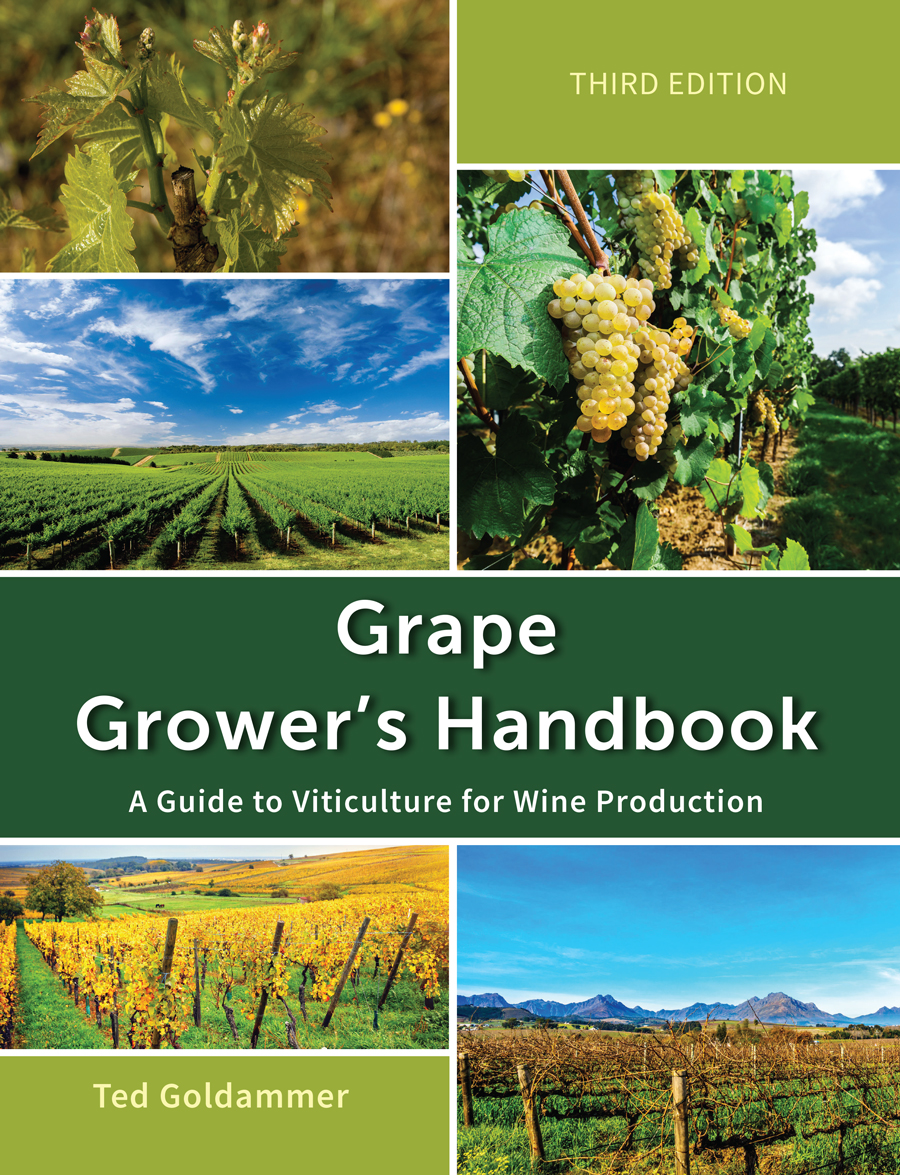Fertilizer Management for Grapevines
Types of Inorganic Fertilizers
Many different types of commercial fertilizers are available for use in vineyards and vary according to their source materials, nutrient quantities, and mechanisms of nutrient release. The commercial fertilizers can be broadly classified into: nitrogen, phosphorus, potassium, sulfur, calcium, and magnesium fertilizers including micronutrients. Some fertilizers contain only one mineral nutrient whereas others contain several. Many of the commonly available inorganic fertilizers are described below, and their analyses are summarized in Appendixes, D, E, amd F.
Nitrogen Fertilizers
Many different chemical and physical forms of nitrogen (N) fertilizers exist. Some of the more common fertilizer nitrogen sources are given in Appendix D, Nitrogen, Phosphorus, and Potassium Fertilizers. Vines can use nitrogen in one of two forms: ammonium nitrogen (NH4) or nitrate nitrogen (NO3). Ammonium nitrogen is changed to the nitrate nitrogen form by bacteria, a process known as nitrification.
Phosphorous Fertilizers
Many different chemical and physical forms of phosphorous (P) fertilizers exist. Vines absorb most of their phosphorus from the soil solution as orthophosphate (H2PO4¯), regardless of the original source of phosphorus. Although orthophosphate’s negative charge prevents it from being attracted by the soil’s cation exchange capacity (CEC), it does react strongly in the soil, primarily with the large amount of iron and aluminum naturally in the soil, to form products that are very insoluble and thus unavailable to plants.
Potassium Fertilizers
Potassium occurs in the soil in three forms: as exchangeable (available) potassium (K?) adsorbed onto the soil CEC; fixed by certain minerals from which it is released very slowly to available form; and in unavailable mineral forms (most of the potassium in soils). Vines take up potassium as the K? ion. Some of the more common fertilizer potassium sources are given in Appendix D, Nitrogen, Phosphorus, and Potassium Fertilizers
Sulfur, Calcium, and Magnesium Fertilizers
There are numerous sources of calcium, magnesium, and sulfur for fertilizing grapevines. Appendix E, Calcium, Magnesium, and Sulfur, Fertilizers lists the most common fertilizer sources. In addition, materials such as bone meal, wood ash, manures and sludge can contain adequate amounts of these elements.
Micronutrient Fertilizers
There are many different fertilizers that are marketed as micronutrients. Usually, micronutrients are mixed with fertilizers containing nitrogen phosphorous, and/ or potassium. Because micronutrients are needed in such small amounts, the best method to correct a micronutrient deficiency is usually by application is by foliar fertilization. Appendix, F, Micronutrient Fertilizers lists some of the more common micronutrient fertilizers used in fertilizing grapevines.
Chelates
Some metal micronutrients are “chelated,” meaning synthetic organic compounds wrap around a metal ion to neutralize it electrically in order to increase its availability. Chelates of zinc, manganese, iron, and copper have become standard products for foliar application in many vineyards. Chelating agents for various micronutrient metals include EDTA, HEEDTA, NTA, DTPA, and EDDHA. EDTA is the most common synthetic chelating agent and is used for both soil and foliar applied nutrients.
Click on the following topics for more information on fertilizer management for grapevines.

